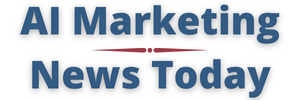Sadagopan S, Executive Vice President, Global Head of SaaS & Commercial Applications, Digital Business Services at HCLTech.
The shift from traditional enterprise applications to agentic AI marks the biggest evolution in business technology since networked computing—not just digitizing workflows, but redefining who makes decisions within organizations.
The agentic AI market is projected to reach $78.2 billion by 2030, with enterprise adoption accelerating at an unprecedented 127% year-over-year growth rate in 2025. Yet, research finds that over 40% of agentic AI projects will be canceled by the end of 2027, due to escalating costs, unclear business value or inadequate risk controls.
This paradox reveals a critical truth. The organizations that succeed won’t be those deploying the most sophisticated AI agents, but those whose leaders master the unprecedented challenge of steering autonomous intelligence toward human-defined outcomes while remaining adaptive to capabilities they never anticipated.
The Autonomous Decision Revolution
Traditional enterprise systems, no matter how advanced, still rely on humans to interpret insights and authorize actions. Agentic AI breaks this dependency by combining autonomous decision making with direct execution across enterprise systems.
Platforms like Salesforce’s Agentforce exemplify this shift, from reactive software to proactive digital employees. Agentforce now resolves over 75% of visitor issues on the Salesforce Help site, showcasing true autonomous problem-solving at scale.
The transformation goes further. Uber’s AI agents assist employees by summarizing communications, retrieving context from past interactions and enhancing productivity across workflows.
This isn’t just faster automation. It’s the rise of autonomous intelligence making strategic decisions once reserved for humans and doing so at machine speed across global operations.
The Implementation Reality: A Practical Framework
The failure rate of agentic AI projects isn’t a technology problem. It’s an organizational design challenge. Over 90% of companies surveyed by McKinsey either use or plan to use agentic AI; yet, most approach implementation using change management frameworks designed for traditional software rollouts rather than autonomous decision making entities.
Successful implementation requires a systematic approach across three critical phases:
Building The Foundation
The first step is to understand the ecosystem in which autonomous agents will operate. Organizations must map not just integrations, but the living network of data flows, decision points and outcomes that define how work truly happens.
Leadership also needs a new kind of fluency, the ability to translate business intent into algorithmic direction. When an AI agent is told to “optimize supplier relationships,” it must interpret what matters most: cost, quality or risk balance.
Finally, trust becomes a design principle. Graduated autonomy frameworks, continuous monitoring and escalation protocols ensure that agents earn independence through demonstrated reliability.
Scaling With Control
Deploying agents at the edge, close to where data and action converge, allows them to operate with contextual intelligence. Just as human teams evolve through collaboration, agents too need shared protocols for communication, learning and conflict resolution.
Redefining The Enterprise
The ultimate transformation is cultural. Enterprise platforms must evolve into adaptive ecosystems where agents build their own functions and humans focus on creativity, judgment and complex relationships. Success depends not only on speed or scale, but also on how effectively organizations measure and nurture the quality of the human-AI partnership itself.
Real-World Transformation Patterns
The most successful implementations follow predictable patterns of human-AI collaboration evolution:
Financial Services: Autonomous trading agents that continuously monitor market conditions, execute hedging strategies and optimize portfolios while human strategists focus on market trend analysis and regulatory compliance.
Manufacturing: Production optimization agents that monitor IoT sensor networks, predict equipment failures and automatically adjust supply chain logistics while human operators concentrate on quality oversight and strategic capacity planning.
Healthcare: Clinical decision support agents that analyze patient data, identify treatment patterns and recommend intervention protocols while medical professionals focus on patient relationship management and complex diagnostic reasoning.
The Leadership Competency
Leading in the age of AI starts with recognizing that our job isn’t to control every decision, but to create the conditions where human wisdom and machine capability can actually bring out the best in each other.
Success in the agentic AI era demands entirely new leadership capabilities that most business schools don’t teach:
Algorithmic Strategy Translation
Leaders must master converting high-level business vision into specific, measurable parameters that guide autonomous decision making without constraining innovation. This requires understanding how AI systems interpret objectives and designing reward structures that align agent actions with desired outcomes.
Dynamic Governance Design
Traditional management approaches assume human decision makers who can be motivated, trained and culturally integrated. Autonomous agents require governance frameworks that monitor performance across vast data sets, automatically adjust authority levels and maintain accountability mechanisms that operate at machine speed.
Evolutionary System Stewardship
Unlike traditional technology implementations that reach steady states, Agentic AI systems continuously evolve their capabilities and decision making patterns. Leaders must develop organizational rhythms for managing ongoing relationships with entities that learn independently and potentially develop insights that surpass human understanding.
The Autonomous Enterprise Horizon
The future belongs to organizations that master hybrid intelligence, where autonomous agents handle execution and pattern recognition while humans drive creativity, ethics and strategy. Leading enterprises are already developing AI orchestration functions that combine technical expertise with foresight and oversight to create intelligence that surpasses human or algorithmic limits.
We’re stepping into a moment where AI isn’t just another tool. Agentic systems can make decisions, collaborate and move on their own. That creates a different kind of relationship between people and technology. I think the organizations that do well won’t be the ones chasing the flashiest automation. They’ll be the ones that stay clear-eyed about what’s worth handing over and what must remain distinctly human. The shift is happening either way. What matters is whether we guide it with intention, so that autonomy in our systems makes space for deeper judgment, better ideas and work that genuinely feels worth doing.
Forbes Technology Council is an invitation-only community for world-class CIOs, CTOs and technology executives. Do I qualify?


